PhotoModeler Software
PhotoModeler Standard helps you create accurate, high-quality 3D models and measurements from photographs using your own camera.
PhotoModeler is the base product. PhotoModeler Premium contains all the capabilities of PhotoModeler Standard, and adds scanning and dense surface modeling (along with SmartMatch, Motion, Idealize, Geographic Systems, Volumes, Contours, and UAV/drone support).
PhotoModeler Standard, as the base product, is a powerful and affordable tool to build accurate models and get measurements from your photos. Use PhotoModeler Standard to build:
PhotoModeler Standard is widely used in these areas:
|
Manufacturing, Refit, Rennovation |
|
|---|---|
|
|
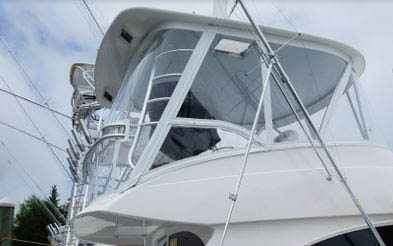
|
|
|
|
|
|
Public Safety, Accident Reconstruction, Forensics |
|
|
|
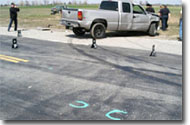
|
|
|
Architecture, Engineering |
|
|
|
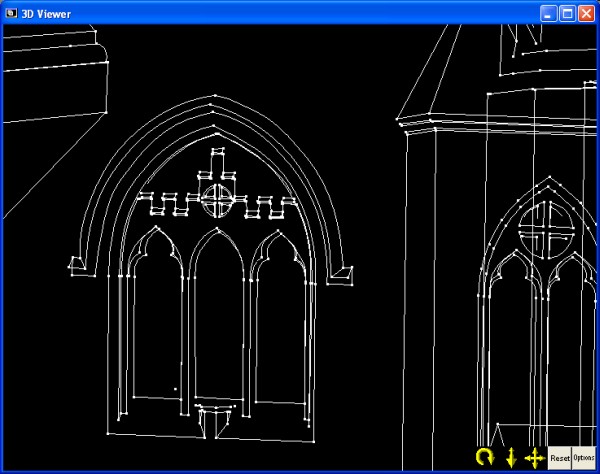
|
|
|
Surveying |
|
|
|
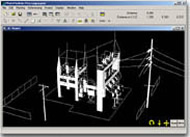
PhotoModeler Premium provides the tools for you to create accurate, high quality 3D models and measurements from photographs. The process is called photo-based 3D scanning.
PhotoModeler Premium is a 3D scanner that provides results similar to a 3D laser scanner (with appropriate textures). This 3D scanning process produces a dense point cloud (Dense Surface Modeling, DSM) from photographs of textured surfaces of virtually any size. PhotoModeler Premium is also perfect for many drone / uav projects.
The PhotoModeler Premium software has all the capabilities of the base PhotoModeler Standard product plus the capability to do Dense Surface Modeling (DSM), 3D scanning, SmartMatch, Geographic Systems, and Motion capture. Because Premium can handle all the functions of Standard (such as coded targets, manual projects, etc.), if you have a mix of project types, Premium may be the best choice for you.
PhotoModeler Premium is a sophisticated tool to build accurate Dense Surface Models and get measurements from your photos. Use PhotoModeler Premium to build:
PhotoModeler Premium is widely used in these areas:
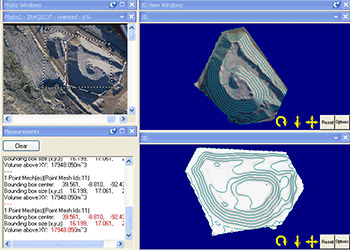
|
Surveying, Construction, Mining, Geology |
|
|---|---|
|
|
|
|
|
Forensics, Biology, Medicine |
|
|
|
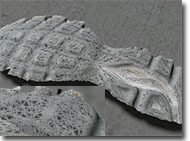
|
|
|
Architecture |
|
|
|
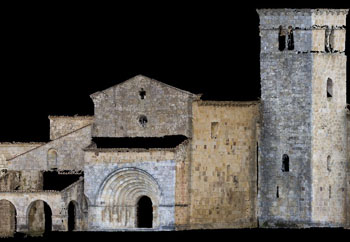
|
|
|
UAV / Drone |
|
|
|
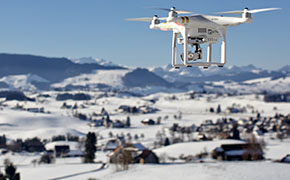
|
|
|
Archaeology, Curatorial |
|
|
|
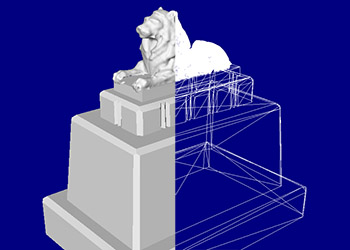
|
|
|
Films, Gaming, Animation |
|
|
|
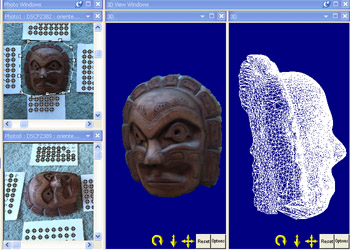
What is Photogrammetry Software?
Photogrammetry is the science of extracting measurements (metry) from photographs (photogram). Photogrammetry has been around in some form since the second world war when photography started to take an import role in remote sensing.
With photogrammetry, you can measure and model the real world with a camera. Use your camera like an advanced tape measure, diagramming tool, and 3d modeler all in one!
Photogrammetry Software is a computer application that provides the tools for doing photogrammetric measurement – the loading of photos from your camera, and the production of accurate measurements, diagrams, and models from those photos.
Computational photogrammetry has been around since the early days of computers. The increasing power of computers, the introduction of the modern graphical user interface, and the introduction of the mouse in the 1980s and 1990s allowed computational photogrammetry to be run on everyday desktop computers. It was now a tool accessible to a wide audience.
Photogrammetry Applications
Traditionally, photogrammetry has been separated into aerial vs terrestrial (or close-range) but the recent advent of drones and UAVs and modern automated photogrammetry techniques has blurred that line.
PhotoModeler is the professional's choice for 3D modeling and measurement throughout many sectors and applications. To learn more about how PhotoModeler is used in specific sectors, you can review below eight applications:
Fabrication and Manufacturing Applications with Photogrammetry
Do you fabricate or manufacture a fitted or custom product?
Custom fitting, retrofits, and remodeling often require measurements and drawings of a remote location or a client site so that a part can be manufactured or fabricated to fit. Photogrammetry creates measurements and diagrams using a normal camera. Instead of having a complex and expensive device for field measurements for your retrofit or remodeling business, you only need a camera and a tape measure.
There are several applications for photogrammetry in manufacturing and fabrication. Here we refer to applications where measurements are made in the field and an object is manufactured at a factory to fit those measurements. That is, the custom fitting, refit, retrofit, or remodel application.
Benefits and Advantages
Compared to most other accurate field measurement technologies, photogrammetry (or camera-based measurement) has these major advantages:
Public Safety, Accident Scene and Forensic Applications
Use Your Camera to Diagram and Measure
PhotoModeler photogrammetry software provides accurate measurement and diagramming for many law enforcement, public safety, accident reconstruction and forensic tasks. A very fast, accurate and cost-effective method. Used by law enforcement and by forensic engineers. See the application areas below.
Applications
There are a number of applications for photogrammetry in accident reconstruction and forensics.
We have divided them into four categories.
Accident Scene Diagrams: generating diagrams and maps of existing scenes using your camera.
Vehicle Crush Measurement: measuring crush of vehicles from either your camera or from unknown cameras.
Crime Scenes: crime scene diagramming, 3D bullet trajectory determination, shoe and tire print scanning, and blood spatter measurement.
Surveillance Video: suspect height recovery, and diagrams from a single photo.
Engineering and Surveying Applications
PhotoModeler software has many capabilities and features that support the requirements of engineers, surveyors, and architects. Mechanical, civil and chemical engineers use PhotoModeler for a diverse set of measuring and dimensioning tasks. Surveyors use PhotoModeler to generate maps, volumes, cut/fills, and get key dimensions. Architects use PhotoModeler to generate as-builts, facade drawings, and assist with shadow, volume, and massing studies.
With PhotoModeler you can:
Digitize 2D Patterns and Templates with a Camera
Yes? Take a look at PhotoModeler for your 2D pattern digitizing needs!
“I’d looked at other digitizing systems, and regardless of price, PhotoModeler was the better product. It is easy to set up, easy to use, has good integration with industry standard CAD packages – which eases the learning curve, and importantly, if the camera can be mounted high enough, a massive field of view. Our pattern capture workflow has been massively reduced in term of time and required skill sets! ”- John Bland, Managing Director, Tecsew Ltd.
Benefits of PhotoModeler for Pattern Capture
The PhotoModeler software provides a flexible, efficient and cost-effective method to digitize patterns and templates using a standard camera. Here are some of the benefits:
Note¹ during the Beta Period, the Pattern Capture Add-on is included for free with PhotoModeler Standard and Premium.
The Steps
PhotoModeler allows you to work in two different ways. A permanent setup with a camera mounted on the ceiling or wall, or a moving camera setup.
The approaches for the mounted camera, and moving camera with reusable setup start the same. You first create a base project using PhotoModeler Coded Target sheets. This will calibrate your camera and your setup. You then place your patterns, take a photo, load the 'base' project and digitize your lines or edges.
With the moving camera and temporary setup, there is no base project. Instead you place your pattern and the Coded Targets sheets all at once, take a number of photos from different angles, and then the photos and measurements can be used locally or sent to a remote site for the digitizing process.
It may seem complex but you will tend to use just one of the variants and won't have to worry about the others.
The Digitizing Step
The actually step of digitizing the outlines, lines, or edges of your pattern can be carried out one of three ways. One of these will work for you.
In reality you can use combinations of these. You may wish to use Auto-Trace to do the work of digitizing the detail, and then export this data along with an export of the corrected ortho-photo, so you have the best of both worlds in your CAD package.
Requirements and Cost
To use PhotoModeler for 2D pattern and template capture you will need:
Note² If permanently mounting a camera you will want to look for a camera with a non-zoom lens, that can be powered and controlled at a distance, that has sufficient resolution, and where images can be transferred to your PC at a distance.
Geology Applications with PhotoModeler
There are a number of applications in mining, quarrying and geology for PhotoModeler and PhotoModeler Premium. PhotoModeler Premium provides a very cost effective and efficient method for modeling the earth surface, cliff and exposed rock faces, stockpiles, and tailing piles.
One can extract dense point grids (similar to a laser scanner). In addition surfaces, contour lines, and measurements can be done on the resulting point clouds. With input of external control data you can geo-reference the project and the outputs. Far more cost effective than using traditional surveying methods!
Measuring volumes of stock and waste piles is a good application as well.
UAS and Drone Applications
PhotoModeler is a great measurement tool when the camera platform is an unmanned aircraft system (UAS / UAV / drone). While UAS is not a specific application, this page pulls together a number of application areas in one place.
UAS are ideal for capturing large areas from above, as well as inspecting objects that are high off the ground. Modern UAS are more and more accessible with lowering costs and improving cameras - perfect for aerial photogrammetric measurement that PhotoModeler can provide.
PhotoModeler customers are using quadcopter, hexacopter, and fixed wing UAS from many different manufacturers.
Possible UAS applications with PhotoModeler:
Academic, Research, and Education Applications with Photogrammetry
Do you teach, do research in, or are a student of?
Yes? PhotoModeler is the perfect tool for photogrammetry education and research in college and university.
Here are some of the benefits of using PhotoModeler for post-secondary education and research in photogrammetry:
Film, Gaming and Animation with PhotoModeler
PhotoModeler is a powerful tool for creating 3D models for animation and multimedia applications and is used extensively in animation, film and video production (pre and post). With this award-winning modeling tool, you can export simply and easily detailed 3D models with photo-textures for use in 3D Studio, OBJ, and VRML formats for use in many programs like Maya, 3D Studio Max, XSI, Cinema 4D, etc.. As well computed camera position data can also be exported.
With PhotoModeler Scanner's Idealize capability you can remove all distortions from the original photos to provide highly precise background plates for further modeling work in your favorite modeling package.
With PhotoModeler you can:
|
PhotoModeler is used successfully when 3D models and measurements are required, especially when high-accuracy, non-contact measurement is important.
PhotoModeler Software
PhotoModeler has a long history as a leading photogrammetric tool. PhotoModeler introduced the concept of a desktop close-range photogrammetry product to the world in 1993 and has been a leader in technology since. Many consider PhotoModeler to be the ‘father’ of modern desktop terrestrial photogrammetry.
Comparing PhotoModeler Standard and Premium
There are two products in the PhotoModeler line up:
PhotoModeler Premium contains all the features of PhotoModeler Standard.
Which product should you use?
Note that if you have a mix of project types, Premium can handle all the projects that Standard can, making Premium the best choice
|
Your Field |
Use Standard |
Use Premium |
|
Fabrication / Manufacturing |
Yes |
|
|
Forensics / Single Photo |
Yes |
When integrating with laser scan data. |
|
Accident Reconstruction |
Ground-based photography |
Ground and UAV/drone photography |
|
2D Template Pattern Digitizing |
Yes, with Pattern Capture Add-on¹ |
Add-on included |
|
Construction Cut / Fill |
|
Yes |
|
Volumes – stock pile etc. |
|
Yes |
|
DEM, Contours, Ortho-photos |
|
Yes |
|
Drone/UAV Projects |
Simple, non-automated projects |
Larger projects and need for geographic systems |
|
Motion Tracking |
|
Yes |
|
Film and Animation |
|
Yes |
|
2D Template Digitizing |
Yes |
|
|
Research / Academics |
Simple and Coded-Target projects |
Everything else. |
© Copyright 2000-2023 COGITO SOFTWARE CO.,LTD. All rights reserved